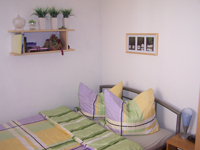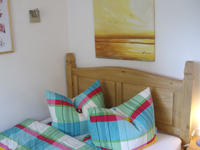The apartment Cologne presents: the Archdiocese of Cologne
A lot of information is provided in this article. We hope the article has not been too long! Some facts about the Archdiocese of Cologne in Germany and the ecclesiastical province of Cologne:
- the diocesan Bishop is called Rainer Maria Kardinal Woelki
- There are 3 auxiliary bishops: Dominik Schwaderlapp, Ansgar Puff and Rolf Steinhäuser
- the emeritus auxiliary bishop is Klaus Dick
- the Vicar General is called Markus Hofmann
- the area is 6.181 km2
- there are 15 deans
- there are 527 parishes
- there are 5,490,036 residents (as of late 2018)
- the proportion of Catholics is about 1,971,823 (equivalent to 35.9%)
- there are 771 diocesan priests
- there are 188 religious priests
- there are 281 permanent deans
- 258 monks are active
- 1,238 nuns are working
- the rite is roman
- the liturgy language is German and Latin
- the cathedral is the Kölner Dom
- their website is: www.erzbistum-koeln.de
- The suffragans are: Aachen, Essen, Limburg, Münster and Trier
Numbers, dates, facts
The Archdiocese of Cologne reads in Latin: Archidioecesis Coloniensis. It is located in the state of North Rhine-Westphalia and is a Roman Catholic diocese. It is located in the west of the state. The Archdiocese of Cologne is one of the oldest dioceses in Germany and the entire German-speaking area. It is also the largest bishopric in the German-speaking region. The archdiocese of Cologne has about 1.99 million Catholics. The booth was measured at the end of December 2016. The ecclesiastical province of Cologne consists not only of the Archdiocese of Cologne but also of Aachen, Limburg, Essen, Münster and Trier with their suffragan bastards. There is a Metropolitan, who is provided by the Archbishop of Cologne. The Cologne Cathedral is the cathedral of the archdiocese of Cologne. Rainer Maria Cardinal Woelki is the current archbishop of the city. He has held office since September 2014. Before his current position, Woelki was the Berlin archbishop.
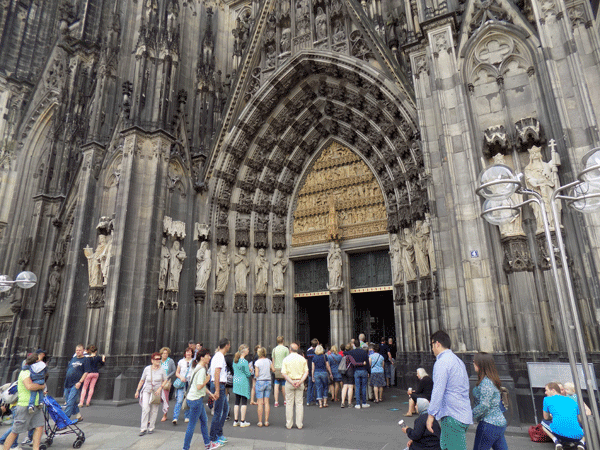
Historical Facts: The Beginnings of the Archbishopric of Cologne
In former times there was a Christianity community in Cologne . On it also the archbishopric of the city Cologne is based. The city was under Roman rule at the beginning and Christians did not have it easy. Of course, they had to hide and take care not to reveal themselves. There were secret gatherings of Christians. Irenaeus was the bishop of Lyon. In his book "Against the heretics" is to read: (Adversus haereses in Latin) - that there are Christians who live in Germania. From this document it is clear that there must have been Christians in Cologne as well as in Mainz. Christian communities were certainly in these two cities today. At that time they were the main places of the provinces. Maternus was the first bishop of the city of Cologne. This is apparent from the first written sources. He participated in the Synod in the city of Rome in 313.
Also in 314 he was a participant in a synod in Rome and this is also apparent from written sources. There is a document in which Maternus is cited as Bishop of Cologne. A Frankish name had Evergislus, a first bishop with Frankname. The saint, also known as Eberigisil, lived in the 6th century. Hildebold was a bishop and worked at the court of Charlemagne. As a reward, this Hildebold appointed bishop. In 794 Hildebold got the archbishop's title. Charlemagne awarded him this title. First he got the title only as a personal honor. Archbishop Gunthar was awarded the pallium. This was a Metropolitan law sign and Nicholas I, then pope, gave Gunthar that title. The years 858-860 were then under metropolitan authority of Archbishop Gunthar.
The High and Late Middle Ages
Rainald von Dassel, an archbishop, came to territorial politics. Philip I von Heinsberg was the successor to Rainald von Dassel. This then continued this policy of his predecessor more intense. Archbishop Rainald turned his policy against the Count Palatine. At that time it was Konrad von Staufen and this was Palatine at the Rhine. Also against Count Heinrich von Arnsberg turned the policy of Rainald. Henry the Lion resisted the policies of Cologne and the archbishop. In 1164 the relics of the three kings were transferred to Cologne . This was a significant Christian-spiritual sign in the diocese. Archbishop Rainald von Dassel had the bones transferred. The catapulted Cologne immediately to one of the most important pilgrimage sites of Christendom. The city of Cologne was from then on "Sancta" lead in the title. Sancta stands for "holy" in Latin. Cologne also housed Saint Gereon and Saint Ursula. The name of the city was "Sancta Colonia Dei Gratia Romanae Ecclesiae Fidelis Filia." In English, this means - Holy Cologne: a faithful daughter of the Roman Church.
The archbishops always spoke of your city of Cologne!
At that time there was a Carolingian dome that soon became too small for all the pilgrims. In 1248 Konrad von Hochstaden, then archbishop of Cologne, had the plan for the cathedral mature. The foundation stone was laid in 1248. From the 12th century, autonomy struggled in the city of Cologne. The city dwellers wanted a bourgeois independence. This worsened the relationship with the archdiocese. In 1288 it came to the war of succession and this was the culmination of the worse relations. The Battle of Worringen was loyal to the opponents of the archbishops. This battle brought the archbishops for their worldly power. In Cologne, the archbishops had a supremacy in about 100 years. This was smashed and dissolved. The Lower Rhine and the South of Westphalia had to give up their feudal lords here. These feudal lords were lost by the battle and thus their noble vassals. Some were neutral at the Battle of Worringen. Others had even struggled on the side of the bishops. In written sources, however, the archbishops of Cologne still thought that they spoke "from our city of Cologne" . But this was only a symbolic act.
The reservation rights over Cologne were not lost however. These kept the archbishop of the city of Cologne. The high court was still in the hands of the archbishops. In 1475, the imperial freedom and its recognition "de iure" was abolished and the archbishops had nothing more to say. But that did not end any disputes about competences. These disputes continued unabated for a very long time. However, the archbishops as territorial princes had nothing more to say. Since 1475, the imperial city was free and also archbishops were considered strangers. They also had to ask for admission. Until 1803, the Archbishop of Cologne was Elector of the Holy Roman Empire of Germany.
History of the Reformation
Already in the year 1000 there was a church structure in the city of Cologne . In the Middle Ages this structure remained the same in the Greater Cologne area. In modern times, some drastic changes were added. Cologne and the imperial city, the archbishopric and the archbishopric were historically interwoven. But these are three different definitions. The archbishopric was smaller and under secular regency, whereas the archdiocese was under ecclesiastical administration. In the 16th century, one did not notice any changes. The Reformation in the archdiocese of Cologne was more secret. One tenth of the parishes moved to the Protestant denomination, which was previously Catholic. The Protestant confession was more Lutheran and Reformed. Wesel and Soest freely changed the denomination. The respective sovereigns were partly against the abandonment of the Catholic faith.
On the other hand, however, the rulers had an influence on the faith policy. These then worked for the benefit of the sovereign church regiment. The Dukes of Kleve died in 1609. These previously dominated Jülich, Berg, Kleve, Ravensberg and Mark. The dukes did not openly join the Lutheran church. But these areas helped the stability of the Archbishopric of the City of Cologne . In 1609 the Klever Duchy came to Brandenburg-Prussia. Then Moers came along too. At that time there was a Protestant dynasty, which ruled in one of the archdiocese of Cologne. It came to a Gegenreformation of the Catholics and the Protestants blocked this. The faith policy was connected with the Jülich-Klevischen Erbfolreitreit of the years 1609-1666. It was about power politics, which was quite complicated.
In the end, toleration rules were used, which were lived mutually. These were valid for the Catholic, the Lutheran as well as the Reformed confession. There was therefore no access of the Archbishop of Cologne to these denominations. This had to focus on his secular reign area, which was rather small. Therefore, the sphere of activity of the Cologne archbishop was not powerful. Linz on the Rhine was located on the left bank of the Rhine, all other areas were on the right bank of the Rhine. The estates had a strong position and the archbishop could not seem quite great. His powers diminished from 1451 very much.
Scope
The reign of the Archbishop of Cologne was so from the late Middle Ages severely limited . As a secular prince, as well as a church prince, he had no real power. There was no real capacity for action and at that time there was a lack of real personalities among the bishops. In the entire diocesan administration, adverse conditions prevailed. Nobody seemed to be able to handle them properly and keep them organized. Salentin von Isenburg and Friedrich von Wied resigned as bishops. Hermann V. von Wied tried it with some attempts to reform. These were held by him in 1543. Gebhard Truchsess of Waldburg wanted to convert the archdiocese of Cologne into a duchy of Protestants in 1582. This was to happen in succession, but Gebhard drove a defeat, which brought the Truchsessische war.
There were no long-term consequences for the archbishopric. Nevertheless, these efforts by Gebhard and Hermann were considered very dangerous for the opponents. The Catholics in the Reich saw a Protestant emergence of the Cologne archbishopric in the distance. This other creed would be fatal. The Elector of Cologne had a vote for election to the Emperor. Therefore, there would be an empire with Protestants, where you could not foresee the consequences.
The years 1583 to 1761 and the "Bavarian rule"
There was stability in the archbishopric of Cologne . In other regions there was rapid Protestantization. At that time there were political interests that were overarching. The Rhinelanders in the centuries 16 and 17 remained largely Catholic. They were not faithful or averse to the Reformation. The reason was simply that the Catholic powers that still existed in the 16th century were strong in their enforcement. These forces were once the Curia, the country Spain with the house Habsburg and the Wittelsbacher from Bavaria. In the West, the Catholic faith prevailed. The Wittelsbachers from Bavaria secured themselves from the 16th century the princely bishoprics. Cologne also fell into it and the dukes of Wittelsbach influenced the electors (since 1623 or 1648). There were 24 dome capitals to choose from.
Domkapitulare, who were Protestants, could thus be disposed of quickly. Thus they exercised by election church policy in their sense. The episcopate had a huge significance in the context. The young sons had to be looked after properly. These were prepared for a spiritual stand. The house Bavaria-Munich was very rich in children in the 16th century. The house laws were of dynastic nature and from the year 1505 was the primogeniture principle. This gave a country division, which was suppressed among the stragglers of sons. Therefore, the territorial lords set the religious course. So there was no free choice, but political attention.
In 1559 a bishopric reform took place
The early modern era made an administrative reform. There was an administrative change in the church organization in Cologne. There was a dispute between the country Spain and the provinces of the Netherlands. These were located near the Cologne archdiocese. King Philip II was regent of the Netherlands. In 1559 it prevailed, so that Pope Paul IV redesigned the diocese structure . King Philip II did not want Protestantism to spread further. He used the means of church policy to contain Protestantism. The Habsburgs had interests of their house policy. These were in the sign of the Holy Roman Empire. The Habsburgs wanted to consolidate the church apparatus and introduce increased controls. The Netherlands called only six bishoprics their own. These dioceses had a relatively respectable size. King Phillipp II caused the number to increase.
There were divisions and start-ups and there were 19 bishoprics. The diocese of Roermond was also called into being, which existed until the year 1801. Some parishes were diverted, which lay with Nijmegen. The upper quarter funds with the rivers Niers and Maas were also diverted. The suffragan of Utrecht in Cologne has been made smaller. It then no longer belonged to the ecclesiastical province of Cologne. Instead, it was elevated to an archdiocese, as Cambrai and Mechelen are. Münster was also a suffragan of Cologne. This had to be recorded losses of 1559 in number. It came to the failure of various fees, such as insertions.
The years 1794-1813 and the revolution
Left the Rhine, the areas were occupied by the French. Until 1794, the right wing of the Rhine was occupied. During the French and Jacobin periods, the Catholic Church was suppressed. Also between 1795 and 1799 the church was suppressed. Napoleon finally put a stop to this and ended this suppression. Bonaparte was not about tolerance or religion. At that time he acted with calculus in order to celebrate himself as a reincarnator of the Christian tradition. It was returned to the Gregorian calendar. In the year 1806 an imperial catechism was published. The Reichskirche was underground, but Napolen Bonaparte made no political concessions to the church.
Friedrich von Luneville annexed in 1801 the whole left Rhine area. Then Napoleon dissolved the parts left of the Rhine under French occupation. Thus he ended without further ado a very long church tradition. This lasted more than a thousand years and this was terminated in the Rhineland. Instead, he founded the Diocese of Aachen and this had a episcopal leadership. Marc-Antoine Berdolet was Napoleon's follower and the new diocese was led by the archbishopric of Mechelen.
Prussian period from the year 1815
When Napoleon's power dwindled in Germany, there was a church change from 1814 to 1815. In 1821, a state church contract was concluded. This came about between Prussia and the Curia. In 1815 the Vienna Congress took place and in 1821 the dissolution of the diocese of Aachen took place. The Archdiocese of Cologne has been re-established. The areas of Aachen under ecclesiastical administration went partly to Cologne and partly to Münster. The districts Cologne, Aachen as well as Dusseldorf were divided like state district districts. In the north of the Lower Rhine, Kleve and his parishes were incorporated into the Münster diocese. It has the deaneries Kleve, Wesel, Warendorf and Recklinghausen. Prussia was very accommodating to the Archdiocese of Cologne. In the following decades there were therefore some conflicts between the church and the state in the Rhineland.
The Cologne turmoil was at the center of these conflicts. Clemens August von Droste to Vischering, the then archbishop of Cologne, was arrested. The arrest happened in 1837 and interdenominational marriages took center stage. The legal status could not endorse Drose. There was a detention of two years. Some historians believe that this event laid the foundation for the Kulturkampf in the German Empire. In the "res mixtae" there was a separation between state and church.
The 20th and 21st centuries
In the 20th century, the Cologne archdiocese was separated. It came to the separation from the Eupen Malmedy diocese. In 1930, the diocese of Aachen was re-established. In 1956, the Ruhrbistum of the city of Essen was re-established. From the year 1954 the archbishopric of Cologne has a sponsorship. Joseph Cardinal Frings was Archbishop at the time. The diocese sponsorship consists of the Tokyo Archdiocese. Joachim Cardinal Meisner founded another partnership. This consists of Dresden-Meissen and its bishopric. The Archdiocese of Cologne sees itself at the top as an economic factor of the dioceses in Germany. It has the largest household volume in the world .
In 2010, the archbishopric made investments in daycare, called Kitas for short. Also, some schools were renovated and renovated. A foundation center belongs to the Archdiocese of Cologne. It has the function of taking care of donations. Other donations are also being explored by the foundation. Various estates that come to the Archdiocese of Cologne are also in their area of responsibility. There is a loss of membership in the Archdiocese of Cologne. Thus the archbishopric is not alone. Church exits and demographic change are responsible for this. In 2010 there were 15,163 withdrawals .
The archbishopric was ruled by suffragan bishops next to the archbishop, four in number. Since 2004, there are only three left. There is a population decline in Cologne and the average age is rising. Since the 1980s, there has been a dramatic decline in confirmations. These have dropped to less than 10,000. In 2005, the 20th World Youth Day was organized in Cologne. In 2013, a questionnaire was issued, which the Vatican issued.
The Diocese's Geography: The Diocese's Girth
In North Rhine-Westphalia there are the Bistümber Köln, Leverkusen , Bonn , Düsseldorf, Solingen , Remscheid and Wuppertal. The circle Euskirchen includes Euskirchen and Zülpich. Also the Weilerswist community and the district Mettmann belong to it. The city of Kettwig with the district Mülheim-Mintard is one of them. The Oberbergische Kreis, a large part of the Rhein-Kreis Neuss, the Rhein-Erft-Kreis and the Rhein-Sieg-Kreis as well as the Rheinisch-Bergisch Kreis belong to it. The archbishopric in the Rhineland-Palatinate area also includes areas from the Ahrweiler district. The district Altenkirchen in the Westerwald is one of them. In the north counts the district Neuwied and Windhagen. Also some areas of Kasbach-Ohlenberg are among them.
The diocese outline
The Archbishopric of Cologne has eight circular decanates as well as seven city decodates. There was a reorganization of the Deanery, which took place in 2017. Those deaneries that previously belonged to the county and city deaneries were abandoned. The dissolved deaneries fell to the district and city decanters. There are different boundaries that sometimes deviate from the local authorities. There are also three pastoral districts, which are small in structure. A pastoral district is each provided with a suffragan bishop. The auxiliary bishop participates in confirmations and is in constant contact with the parish priests, even outside his travels.
The Deanery
Several parishes each share a pastoral section. There is a priest who works in both areas. In addition, there is also a pastoral team. Catholics make up 38.7% of the population.
The Archbishops
From the year 1031 the archbishops of Cologne were also archchancers. There was a break with Henry V. When there were Hohenstaufen kings, duchies of Lorraine as well as of Westphalia were added (the years 1151 and 1180). In 1239 the archbishops also acted as electors. During the interregnum there was a double election. In the years 1255 and 1256 this was enforced in politics. In 1356 the Golden Bull was proclaimed and these claims were consolidated, which existed until the beginning of the new era. The Archbishop of Bursa held secular territories. These existed until the time of secularization in 1803.
Even today, the archbishop of Cologne is a metropolitan. He usually has the function of a cardinal. From the 13th century he is also called legate. Therefore, archbishops of Cologne wear a Legatenpurpur. Among the archbishops of Cologne were great personalities. The Archbishop Pilgrim was in 1024 Librarian of the Pope. Johannes von Geissel, a cardinal, was the initiator of the German Bishops' Conference in 1848. Joseph Höffner, also Cardinal, was the founder of the financial administration of the modern nature of the Vatican State. The archbishops of Cologne had in the 16th century a two-part confessional attitude. In the 17th and 18th centuries prevailed the Simonist type. They wanted to gather many high nobility. The pastoral aspect faded into the background and many bishops kept a secular door open.
Maximilian Franz of Austria appeared in the 18th century. This one was an interesting personality, but he was blocked by the French Revolution. At the beginning of the 20th century, the world church came to the fore. Cardinal Joseph Frings made the breakthrough over the guardianship of the curia. Thus, the Second Vatican Council had a great opportunity to work. Joseph Höffner acted as advisor to Pope Paul VI. Also advisor to John Paul II was this. Joachim Meisner was cardinal and good friend of Pope John Paul II. He was also a personal adviser to this pope. The archbishops of Cologne have a world church position in social matters.
They did major union issues across denominations. National as well as international relief organizations were founded. That the importance of the archdiocese of Cologne is outstanding, you could feel when the Erzstuhl should be buried. The church and Prussia had competing interests in the 19th century. Both wanted to see their candidates at the top. In church matters in the Reich these came to a high position. It was always hectic in the course of history. The interests of the archbishopric were put into the background. The Archbishop of Cologne also passed the presidency of the Association of the Holy Land in Germany.
The fortune
The regular budget is overseen and the other budget of the "Episcopal See" is not. However, it depends on whether public money is used or not. Franz-Peter Tebarth-van Elst was Bishop of Limburg. After a few inconsistencies, the archbishopric of Cologne allows a sinking in their assets. This is also true of other dioceses of Germany. In 2013, the assets of the archdiocese were announced. At that time, their assets amounted to about € 160 million . The archbishopric of Cologne has real estate assets of 612 million euros. Thereafter, there should be a further transparency to the diocese finals. In 2016, there was the third time the financial report. The scope ranges from balance sheet figures to the Archbishop's Chair, the Cathedral and the Metropolitan Chapter.
Even foundations are included in the numbers. The assets of the suffragan and the 527 parishes are not included in the balance sheet. In 2015, a surplus of € 52 million was generated . This was a 3% increase in assets. Most of the capital (2.5 billion euros) was invested in financial investments. It also real assets (about real estate) were given with 671 million euros. The church tax was the most important source of income. This rose to € 627.6 million, which equates to an increase of 6.6%. Dominik Meiering is the Vicar General and is not satisfied with the number of church parishes. These also showed balance sheet figures, which are evaluated according to the HGB.
The ecclesiastical life
This is influenced by city dwellers and also in the country one is oriented in the Rhineland or in the Wuppertal area at the city. The pilgrimage life of the Archdiocese is alive and there are many associations. There are different youth groups in all parishes. There is also an important women's community. There is also a rifle brotherhood and a Kolping family. There are different church choirs and altar servers in high numbers. In 2004, this was defined as more than 30,000. On Sunday, the percentage of churchgoers is around 10 percent of all members. There are parish councilors who share responsibility. These are chosen and there are also various pastoral areas. In the Middle Ages, the deaneries were created.
The Self-Image of the Archdiocese
A distinguishing feature for the Catholics in Cologne is the cathedral of Cologne. This was completed in 1880 and Norbert Feldhoff (Domprobst) said in 2005 about the Pope: "We thank and are proud that you are leading your visit to the Cologne Cathedral outside Cologne, the first bishopric that you visit Cologne Catholics consider this to be good, as the Cathedral of Cologne is the Episcopal Church of the 'Ecclesia Coloniensis semper sedis Apostolicae fidelis filia' The Archdiocese of Cologne has about 20 percent Catholics The Christians in the Catholic Archdiocese want to actively enrich the community The "Cologne Catholics" They have a Rhineland homeland feeling and they also feel part of the Catholic Church, but the Catholics from Cologne do not feel too pious, and at certain stages of life, they are again looking for church affiliation They feel that the Catholic Church is still doing well, but that they only marginally live everyday life in the Catholic communities still with.
The cartridge
A short list:
- the Hlg. Drei Könige
- the 2nd patron of Cologne is Gereon of Cologne
- the Pantaleon
- Hlg. Severin of the City of Cologne
- the St. Ursula of Cologne (is the 1st Patroness of the city)
- Hlg. Quirinus von Neuss (is a co-patron in the archdiocese)
Some sanctuaries
The places of worship in the diocese:
- In Bergheim: the Sorrowful Mother of St. Remigius
- In Bonn lies the cathedral of Bonn - there are graves of city patrons (Florentius and Cassius)
- In Bonn lies the Stieg and the Sorrowful Mother, which is located in the Kreuzberg Church
- In Bonn-Pützchen is the Adelheidis spring and the pilgrimage church St. Adelheid
- In Bruchhausen is St. Johann Baptist - pilgrimage to Mary and refuge for sinners
- In Dormagen is the Painful Mother
- In Dormagen is the Salvator grace picture
- In the old part of Dusseldorf there is "Maria in der Not" as well as St. Apollinaris - located in the basilica Lambertus
- The Black Madonna Benrath is located in Dusseldorf-Benrath
- In Düsseldorf-Benrath is the Black Madonna
- In Düsseldorf-Bilk: there are the 14 helpers of Stoffeler Kapelle
- In Dusseldorf Gerresheim there is a holy blood relic, which is in the St. Margaret Basilica
- In Frechen-Grefrath there is a Sorrowful Mother - she is in the Church of the Assumption of the Virgin Mary
- In Grevenbroich there is a miraculous image of the Mari
- In Hennef-Bödingen lies the pilgrimage church "To the Sorrowful Mother of God"
- In Cologne there are relics of the Hlg. Drei Könige im Dom
- In Cologne there is the Black Mother of God of the Church of St. Mary
- In Cologne is the Minoritenkirche - graves of Adolph Kolping, Johannes Duns Scotus (blessed)
- In Cologne-Kalk there is a Sorrowful Mother of God of the chapel in Kalk
- In Cologne-Stammheim there is a joyful Mother of God
- In Königswinter-Heisterbacherrott there is the Judas-Thaddeus pilgrimage
- In Königswinter-Ittenbach there is a Sorrowful Mother of God
- In Kürten-Biesfeld is a Painful Mother of God
- In Leverkusen-Alkenrath there is a jazz chapel
- In Marienheide lies the pilgrimage church of St. Mary Visitation
- In Marienthal in the Westerwald there is a Painful Mother
- In Meckenheim-Lüftelberg there is the Lüfthildisgrab
- In Meerbusch-Büderich there is the pilgrimage chapel Maria in desperation
- In Morsbach-Alzen there is the Fatima Madonna, which can be admired in the Church of the Lady of the Virgin.
- The Michaelskapelle is located in Bad Münstereifel
- In Neuss there is the St. Quirinus of Rome
- In Odenthal-Altenberg is the "Dear Lady of Altenberg" in the cathedral
- In Overath-Marialinden is a Painful Madonna
- In Swisttal-Buschhoven is Rosa Mystica - the St. Catherine's Church houses this
- In Velbert-Neviges: there is a sanctuary of Mary, Queen of Peace
Institutions and Institutions
The diocesan committees and the advisory bodies of the archbishop:
- the Diocesan Pastoral Council
- the church tax and economic council and wealth council
- the Diocesan Council
- the Priesthood
- the Women's Commission
- the art commission
- the Commission for Liturgy and Church Music
- the Ecumenical Diocesan Commission
- the Commission for Continuing Education
- the Deacon Conference of Permanent Deacons
- the Archbishop's Advisory Council on sexual abuse issues
Various institutions for the proclamation of the faith
- the vocation of vocation
- the Archbishop's Bible and Liturgy School
- the Catholic Faith Information FIDES
- the Unit Dialogue and Annunciation
- the St. Ansgarius plant
The formation of priests and deacons
The following training courses can be completed:
- the Archbishop seminary
- the Collegium Albertinum in Bonn
- the seminary Redemptoris Mater
- the deacon institute
Some scientific institutions
The schools and institutes in the diocese.
- the Catholic University of North Rhine-Westphalia
- the Mainz Catholic University
- the Philosophical-Theological College SVD of St. Augustin
- the Kolumba Museum
- a historical archive
- a diocesan and cathedral library
- the Albertus Magnus Institute
Education and Media
There are also various educational institutions and academies in the diocese! Even in the media sector you are on the way!
- The Bildungswerk Erzdiözese Köln has nine family education centers, also eleven Catholic Bildungswerke
- the domradio
- the Domforum as well as information, meeting and event center of the Kölner Erzbistum
- in Siegburg lies the Catholic Social Institute
- in Bergisch Gladbach-Bensberg is the Thomas Morus Academy
- in Cologne is the Karl Rahner Academy
- in Düsseldorf is the ASG Education Forum
Diverse Schools
Education is very important in the diocese!
- the St. Angela Gymnasium Bad Münstereifel
- the St. Adelheid Gymnansium of Bonn
- the Clara-Fey-Gymnasium of Bonn
- the Cardinal-Frings-Gymnasium of Bonn
- Bonn: Archiepiscopal Liebfrauenschule
- Ursulinenschule Hersel von Bornheim
- in Brühl is the Archbishop St. Ursula Gymnasium
- in Dusseldorf is the Archbishop Suitbertus -Gymnasium
- St. Ursula Vocational College is in Dusseldorf
- in Dusseldorf is the St. Ursula-Gymnasium
- in Cologne is the Domsingschule (a primary school)
- in Cologne is the Archbishop's Irmgardis-Gymnasium
- the Liebfrauengymnasium is located in Cologne
- Ursulinenschule Hersel
- in Leverkusen lies the Marienschule Opladen
- in Neuss is the Archbishop's College
- in Neuss is the Marienberg Gymnasium
- in Ratingen is the Liebfrauenschule
- in Rheinbach there is the St. Joseph Gymnasium
- in Wipperfürth is the St. Angela High School
- in Wuppertal is the St. Anna Gymnasium
Diverse Charities
The social federations etc .:
- the Diözesancaritasverband of the Archdiocese of Cologne e. V.
- the Caritas associations - all rural districts and independent cities
- CBT - are the Caritas operations management and carrier company
Diverse Foundations
There are some foundations in the diocese:
- the domradio and media foundation
- the Edith Stein Foundation
- the Edmund Heusgen Foundation
- the Erwin Pougin Foundation
- the Foundation "Archbishop's Archive and Library"
- the Archbishop Foundation of Cologne
- the siblings Löhers Foundation
- the Helmut Müller-Brühl Foundation
- the Hildegard-Knappstein Foundation
- the Cardinal Meisner Foundation
- the Rogamus Foundation for Vocation Ministry
- retirement pensions syrom. Missionary Priest Foundation
- the Foundation of the Monastic Communities of Jerusalem
- the Foundation for Social Purposes
Cultural and tourist attractions
A particularly important and beautiful part in our list!
- the Altenberg Cathedral is located in Odenthal-Altenberg
- the minster in Bonn
- in Bonn-Ippendorf is the Kreuzberg Church - Balthasar Neumann created here a Holy Stairs
- Cologne Cathedral
- the collegiate church, which is located in Dusseldorf, is called St. Lambertus
- in Neuss lies the Quirinus Minster
- The Nevigeser pilgrimage dome is located in Velbert-Neviges and comes from Gottfried Böhm
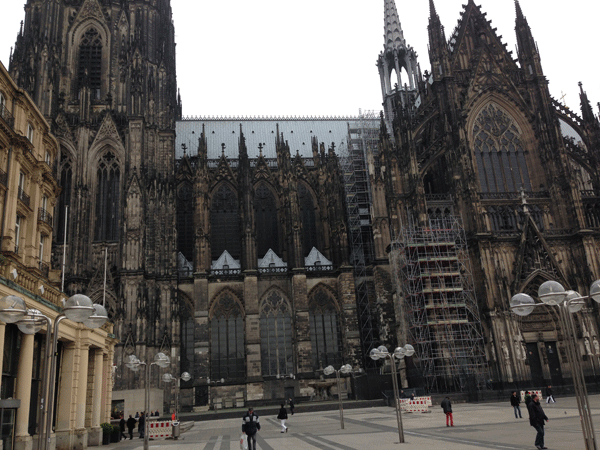
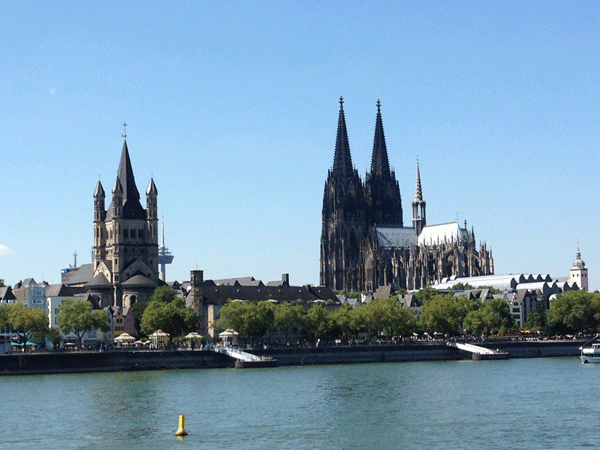
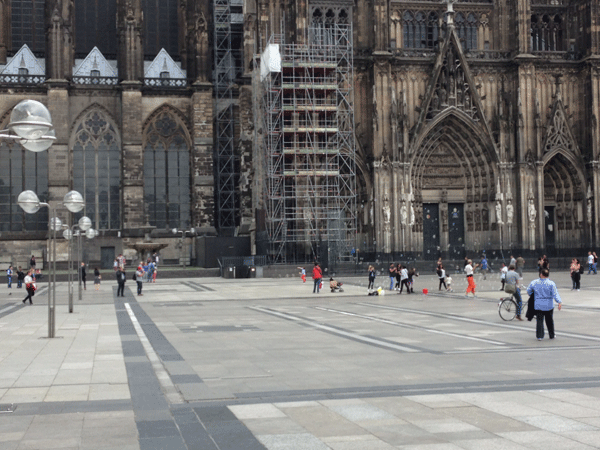
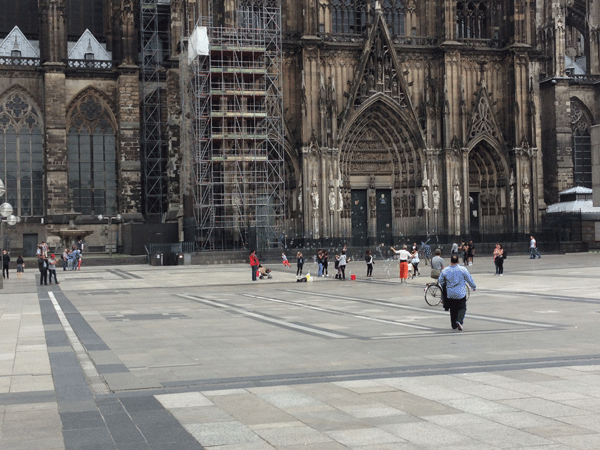
Different personalities
Well-known personalities related to the diocese.
- Albertus Magnus was a Dominican and lived from 1200 to 1280. He was born in Lauingen and died in Cologne. He was a church teacher and was canonized in 1931.
- The Franciscan Johannes Duns Scotus lived from 1266 to 1308. He was born in Duns, which is in Scotland and died in Cologne. In 1993 he was beatified.
- Adolph Kolping lived from 1813 to 1865. He was born in Kerpen and also died in Cologne. In 1991 he was beatified.
- Nikolaus Groß lived from 1898 to 1945. He was born in Niederwenigern and in Plötzensee it came to his execution. Great was a KAB secretary and his beatification took place in 2001.
- Bernhard Letterhaus lived from 1894 to 1944 and was also executed in Plötzensee. He was born in Barmen and was a KAB association secretary.
- Otto Müller lived from 1870 to 1944 and died in Berlin. He was born in Eckenhagen and was a priest. He was also Verbandspräses the KAB in West Germany. He died in the state hospital of the police in Berlin.
- Joseph Roth lived from 1896 to 1945. He saw the light of day in Cologne and died in Bad Godesberg. In 2000 he received an entry in the German Martyrology in the Catholic Church.
- Edith Stein lived from 1891 to 1942 and was born in Breslau. She died in Auschwitz and became a nun in 1933. In 1998 she was canonized.
- various archbishops and bishops
- Auxiliary Bishops of Cologne
- Vicars General of Cologne
- Official of Cologne
The chapter
The cathedral chapter of Cologne currently has 16 official members. Four members do not live at the cathedral and these are also called "non-resident cathedral capitals". The top of the cathedral chapter leads the cathedral provost. The cathedral chapter must choose this and the cathedral dean is appointed by the archbishop. The archbishop of Cologne names the cathedral capitals. The appointment takes place once on cathedral chapter suggestion and on the other after the Anhörund of the cathedral chapter. The cathedral chapter is also the host of the cathedral in Cologne. The host therefore is not the archbishop of Cologne. When the archbishop dies or withdraws, a new archbishop is elected. The cathedral chapter helps the archbishop with the administration.
The following canons are currently (which reside):
- Domprobst Gerd Bachner (2005/2015)
- Robert Kleine (Domdechant 2012)
- Günter Assenmacher is Domprediger and Official (2004)
- Dominik Schwaderlapp is auxiliary bishop (2004)
- Josef Sauerborn (2004)
- Hans-Josef Radermacher (2006)
- (2012) Markus Hofmann
- Ansgar Puff is Auxiliary Bishop (2013)
- Dominik Meiering is Vicar General (2015)
- Thomas Weitz (2015)
- Rolf Steinhäuser is Auxiliary Bishop (2015)
Chapter capitals that do not reside:
- (2008) Anno Burghof
- (2013) Heinz-Peter Teller
- Guido Assmann (2017)
Cathedral capitulars (emeritus):
- Klaus Dick - Weihbischof and em. Domdechandt, 2003
- Ludwig Schöller was 2004 em.
- Norbert Feldhoff was 2015 em. - Domprobst
- Robert Kümpel was em. 2015
Accommodation in the city center of Cologne!
You want to walk to the cathedral? You want to walk to the fair? Then book our Apartment Cologne , then you can easily reach the Cologne Cathedral on foot! Just cross the Rhine over the Deutzer bridge and stroll through the old town. In about 14 minutes you have reached the cathedral! We look forward to your inquiry!
